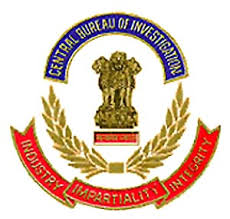Source :M. Sitarama Murty : BusinessLine :16 Aug 2010
The Reserve Bank of India made the first move in raising interest rates and the banks in turn have begun moving both the deposit and loan rates northwards. In a growing economy, the demand for credit will increase, but liquidity may not come under pressure in the near term. Savings too should grow in tandem but not at the same rate, thanks to the inflation that made a dent in the domestic budgets.
The rate movements appear to be fuelling undesirable competition amongst the bankers, a scenario, reminiscent of the unwarranted rate war three years ago. With the busy season still far away, banks have begun offering rates out of tune with their asset-liability management needs. This will only lead to erosion of margins and pressure on profits.
Raising resources
Any effort to pass on the burden to the borrowers would be resisted by looking at alternative ways for raising resources. Some have revived the FD route and before long the CP market would become active. Options of ECB/ FCCBs too are being seriously considered. Some banks reportedly are lobbying with the RBI for sub-Base Rate lending, but the RBI is unlikely to oblige. The banks would be compelled to subscribe to CPs at low rates.
The news on the NPAs front is not encouraging. Export and realty sector are yet to come out fully from the recessionary impact. The SME sector suffered major damage and would not be able to recover easily. The storm has receded, but it will be some more time before complete recovery is seen. The recent European crisis has only added to the anxiety. To reduce the NPAs, banks, perforce, would choose the ‘compromise' route with concomitant sacrifices.
Provisioning on NPAs
The RBI has advised the banks to achieve a level of 70 per cent provisioning on NPAs by September. For the banks at a lower level, it translates into making up for the deficit plus providing 70 per cent for all the new NPAs. Banks already at 70 per cent have to provide 70 per cent for the additions, to maintain the level. This amounts to providing for NPAs at prescribed rates in the normal course and making up for the shortfall by way of a floating provision. In the earlier years, the floating provision was handy as, in lean years and in case of need, banks could use it for making provisions for specific assets. This flexibility is no more available. Banks can only reckon it as tier-II capital. Apart from lack of adequate surpluses this acts as a disincentive. Two major banks have approached the RBI for more time to achieve the 70 per cent norm. Others will follow suit if the outcome is favourable.
Two developments that need urgent and serious consideration are the fresh option given for pension and the raising of the statutory limit for gratuity from Rs 3.5 lakh to Rs 10 lakh. The Indian Banks' Association has sent to the RBI a proposal for amortising this liability over a period of five years, as was done once in the past. The ICAI too has to take a view on this measure. The Income-Tax Department will have to give its nod for deferring the liability. The Basel-II discipline and the need to move over to IFRS do not leave much leeway for manoeuvring.
Though estimates vary widely, the burden could be in the range of Rs 20,000-30,000 crore depending on the number of employees switching over to pension now, their pay range and age profile. Better life expectancy, attractive pension packages and low interest rate regime prompted many to reverse their earlier decision. Banks have been resisting the demand for a second option, but the Government seems to have persuaded them. Add to this the need for setting aside Rs 8,000-10,000 crore for the steep rise in the statutory limit for payment of gratuity. Though it is known to be a consequence of the Sixth Pay Commission, the increase was sudden and steep.
There are no easy options and the banks should be ready to bite the bullet. The huge provisions could drive some banks into red or eat into their reserves, bringing down the capital adequacy, while the business needs and implementation of the Basel-II regime dictate an improvement. For the first quarter, banks have followed different options. Only an urgent resolution of the issue will leave some breathing time to banks to prepare.
Another worry for the banks is to ensure that capital to risk-weighted asset ratio doesn't fall because of the unrated assets in their books which carry higher risk weight and additional capital charge. Save for very large and reputed corporates, at least 75 per cent of the borrowers don't carry an external rating tag by approved agencies. It would be a task to get them agree to and abide by the discipline. Poor ratings in turn should mean stiffer interest rates, but banks may not risk loss of business and would rather sacrifice the risk-based pricing philosophy.
Agriculture advances
The pressure on earnings comes from yet another largely ignored source. Banks with agriculture advances less than 18 per cent of their net bank credit have to invest in Rural Infrastructure Development Fund (RIDF) of Nabard, at interest rates of 3.5 to 5 per cent, depending on the amount of shortfall. Assuming an average return of 7 or 8 per cent on agricultural loans, a whopping loss of three-four per cent on the investments running in to thousands of crores of rupees is a big blow to the banks. The position is relatively comfortable in a few public sector banks while it is difficult in private banks. The interest subvention of the government to the extent of 2 per cent is confined only to the public sector banks and is a clear disincentive amounting to discrimination for the private banks to achieve the bench mark. Farmers naturally prefer to deal with PS banks both for the incentive and a belief that only the ‘sarkari' banks can write-off their loans, at the instance of the government.
Microfinance institutions
The banks falling short on agricultural lending try to make it up partly by buying out at low rates the portfolios of microfinance institutions, that are known to charge to the ultimate borrowers anywhere between 15-24 per cent. This disguised securitisation would encourage more vigorous expansion of the microfinance institutions, some of which have already reached optimum level in terms of geographical spread, number of branches/accounts and ability to monitor and control operations.
Solutions and decisions have to come fast for these problems as hardly eight months are left in this year.
(The author is former Managing Director of State Bank of Mysore. Email: murthy@mandavilli.com)











